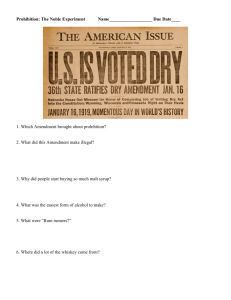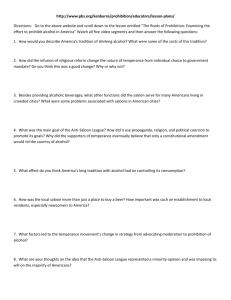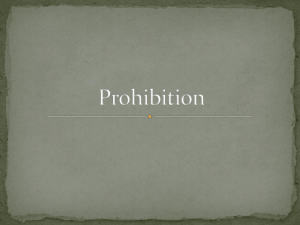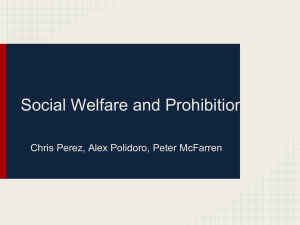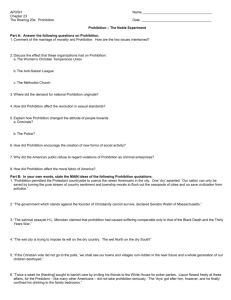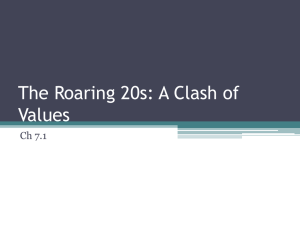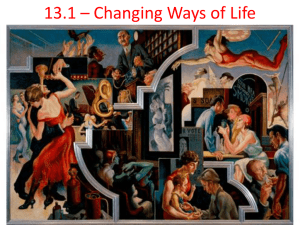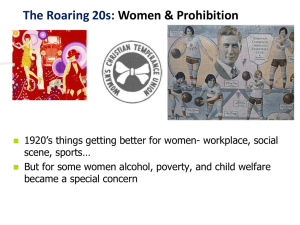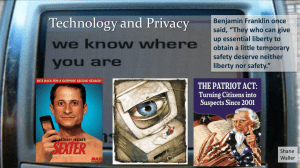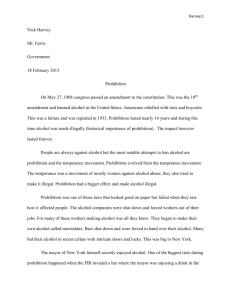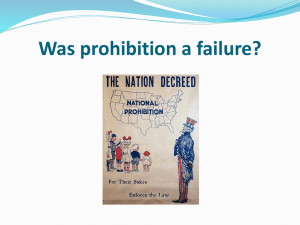Prohibition (18th Amendment)
advertisement
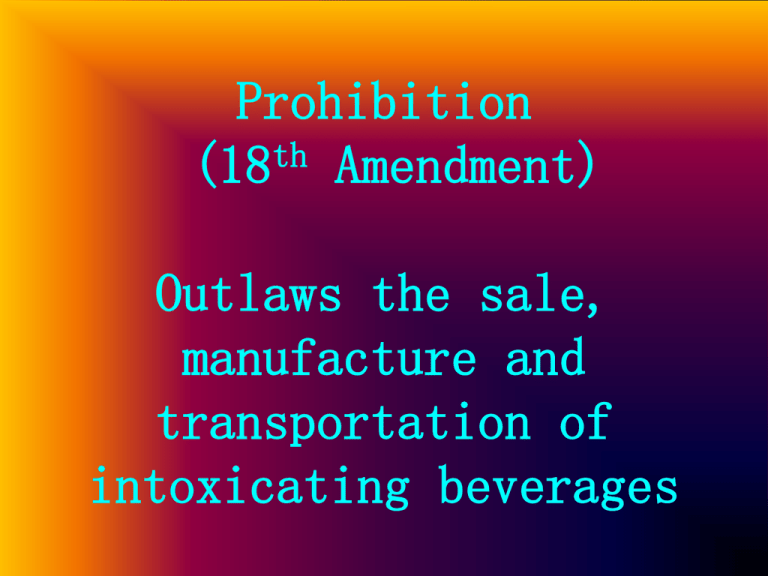
Prohibition (18th Amendment) Outlaws the sale, manufacture and transportation of intoxicating beverages Introduction to Prohibition • • • • • • What was Prohibition? Define Temperance Define Morality Define Pious How did prohibition bring out organized crime? Can and should the government institute morality into our society? Road to Prohibition •I. 18th Amendment; ratified 1919, took effect Jan. of 1920 II. Where and why did it begin? –A. Middle America – Bible Belt –B. Pious Movement –C. Moral (Morality) Crusade –Evils of Alcohol III. Prohibition Organizations • A. Women’s Christian Temperance Movement What is Temperance Carrie Nation – Molly Hatchet Carrie Nation III. Prohibition Organizations cont. •B. Anti-Saloon League Wyanne Wheeler Movement became more powerful politically •C. Impact of WWI IV. Who approved it? Every state except for Connecticut, Rhode Island and New Jersey US became “Dry” in January 1920 V. Volstead Act • Defines what is illegal and outlines the enforcement of Prohibition • Exceptions to the rule –For example Church or medicine •VI. The Enforcers – Prohibition Bureau A. Prohibition Agents B. Izzy and Moe Izzy and Moe VIII. Road to Repealing Prohibition • A. Corruption in the Prohibition Bureau • B. Organized Crime “Speakeasies” – Gangsters owned speakeasies and by 1925 there were over 100,000 speakeasies in New York City alone. • C. Rum Runners • D. Drys vs. Wets Al Capone Detroit police inspecting equipment found in a hidden underground brewery during the prohibition era. Chicago gangster during Prohibition who controlled the “bootlegging” industry. Elliot Ness, part of the Untouchables Agent with the U.S. Treasury Department's Prohibition Bureau during a time when bootlegging was rampant throughout the nation. End of Prohibition • VIII. 21st Amendment- 1933 Repeal of 18th Amendment
